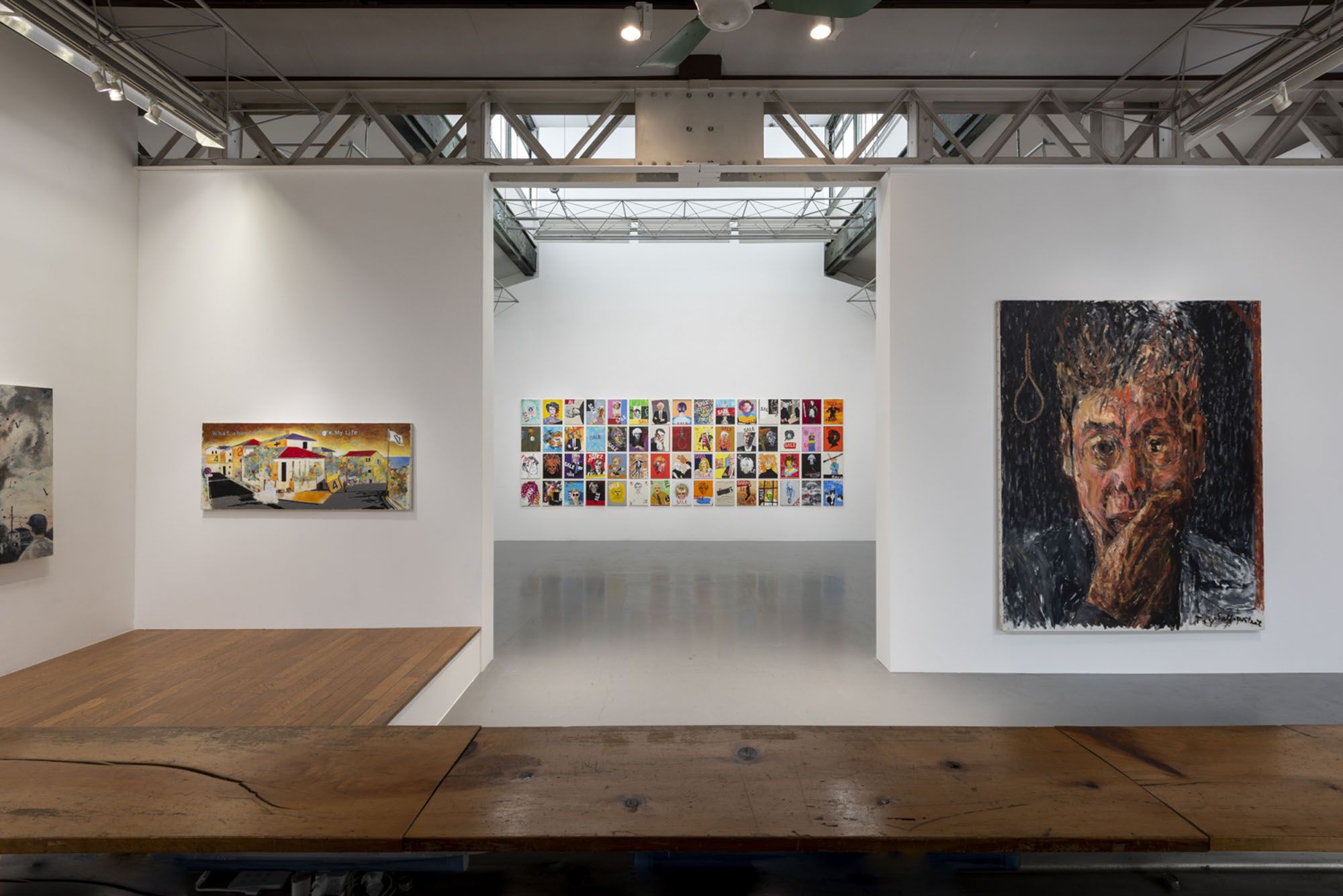The blotchy, salty self-portrait that confronts you as you enter Tadanori Yokoo's exhibition of recent work "B29 and Homeland: From My Childhood to Andy Warhol" (2018) has a hangman's noose in the top left corner. This recalls one of the artist's most renowned works, the 1965 "Having Reached a Climax at the Age of 29, I Was Dead," a vividly colored and exuberant silkscreen print that juxtaposed the image of a hanged man with the backdrop of the Rising Sun flag design.
While the earlier graphic design inflected work is gleefully offensive, the self-portrait is more muted and reflective: The background is black, and Yokoo's chin nestles in the Y shape formed by his hand. His face looks to be on fire, with his hair doubling as billows of black and gray smoke; his expression is halfway between pensive and dumbfounded. "What the hell have I done?," he could be asking; or, as he is looking straight out at us, "Who the devil are you?"
It's probably not necessary to pin down exactly what Yokoo wants to say in his self-portrait, but, like all the works in this mournful, jokey and nightmarish exhibition, it wants to be read. In "Gilgamesh and MP" (2019), we have words and letters painted in the composition to prompt our interpretation. The name Gilgamesh appears at the feet of the Sumerian hero, and above him is a B-29 Superfortress. As well as the original ancient poem "Epic of Gilgamesh," another intertextual reference evoked is Hermann Kasack's 1947 novel "The City Beyond the River," that reframes the ancient myth in the ruins of postwar Germany.



